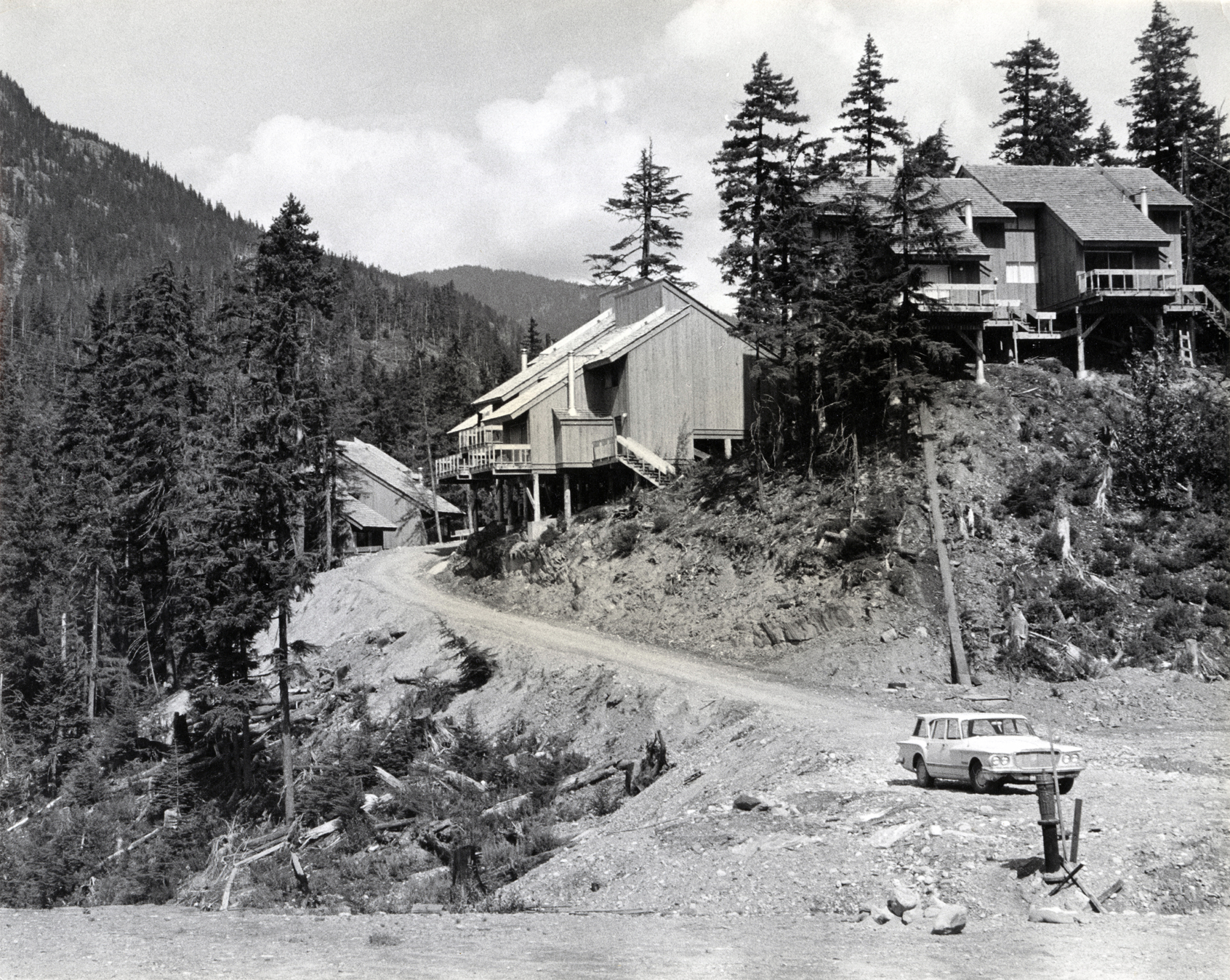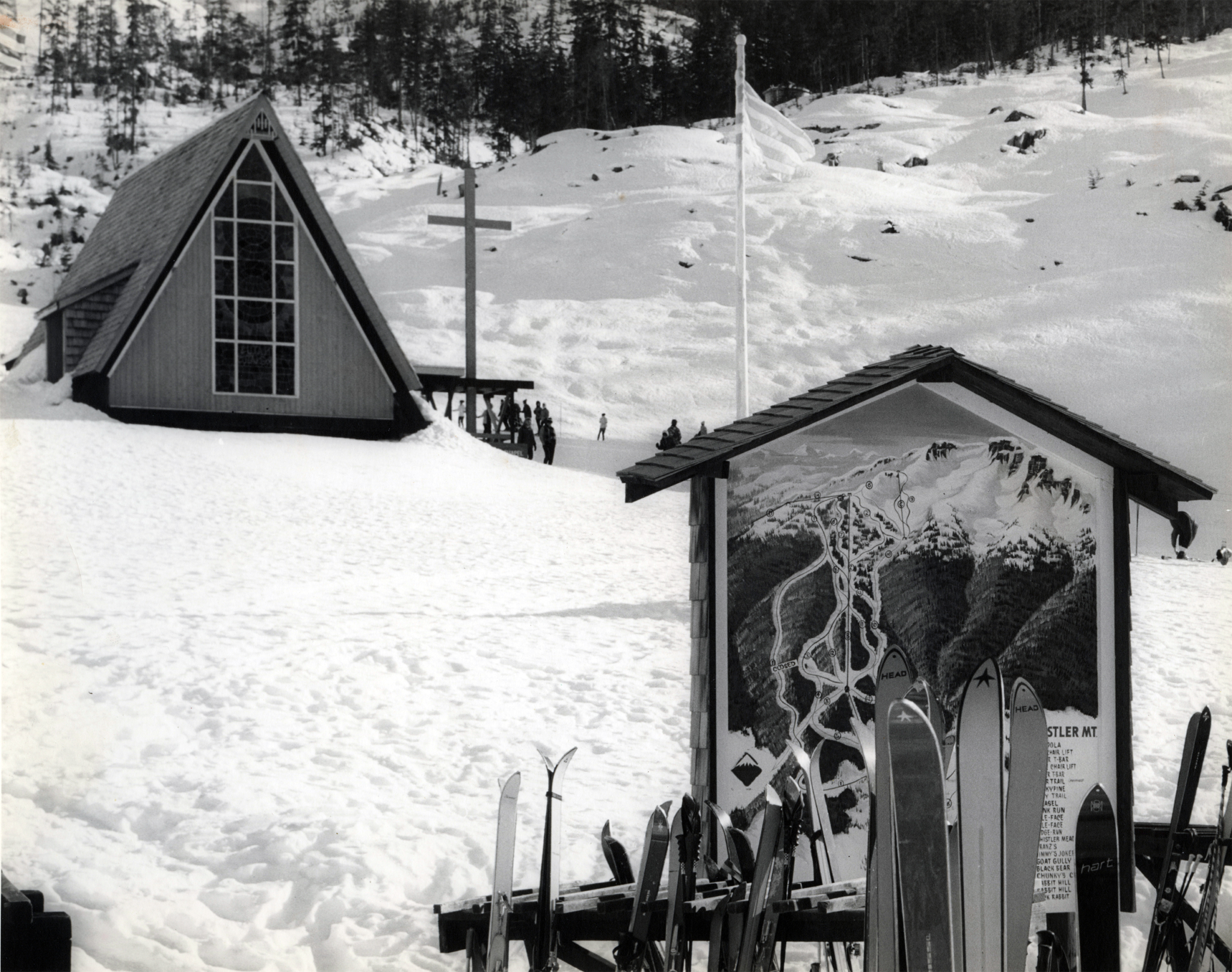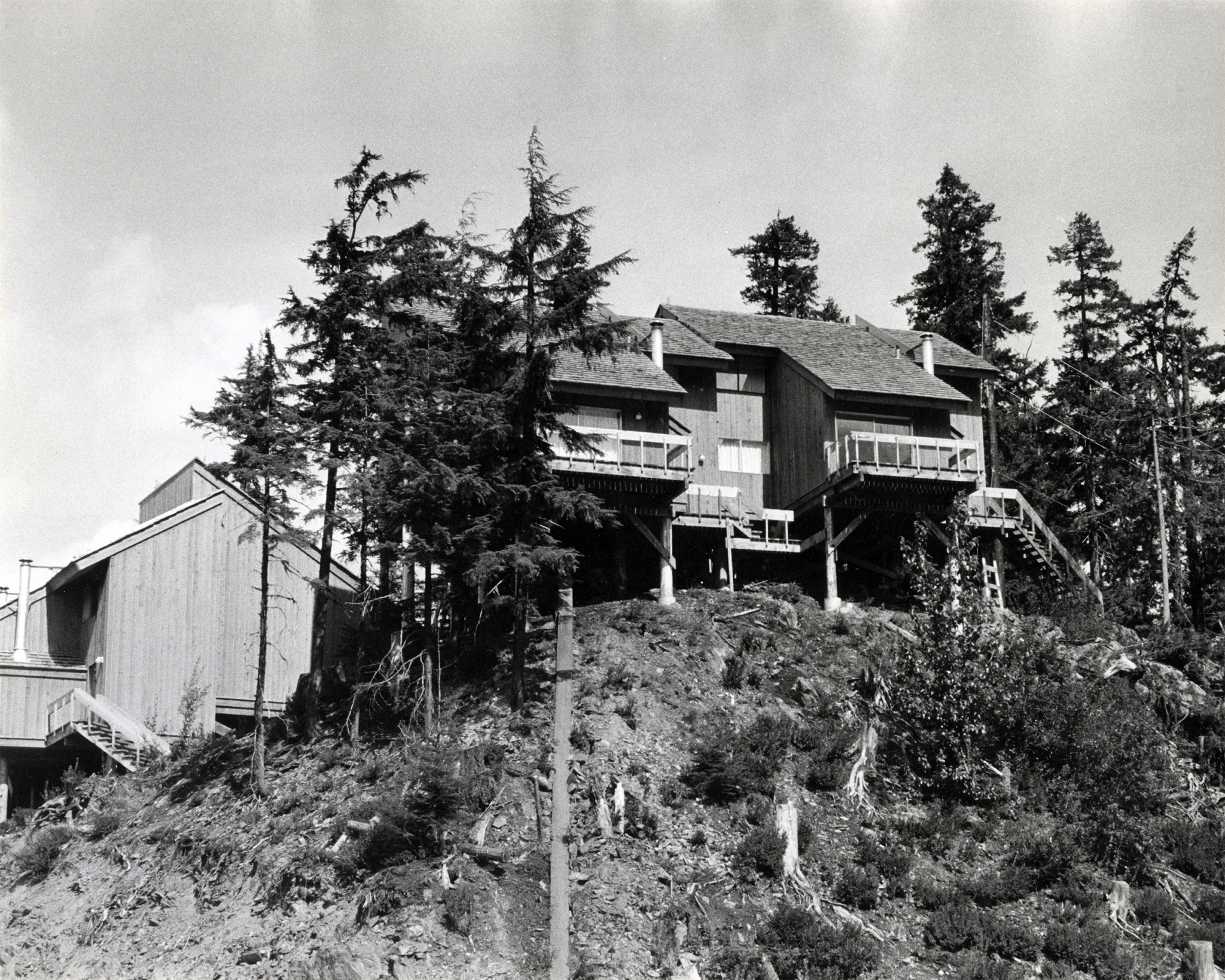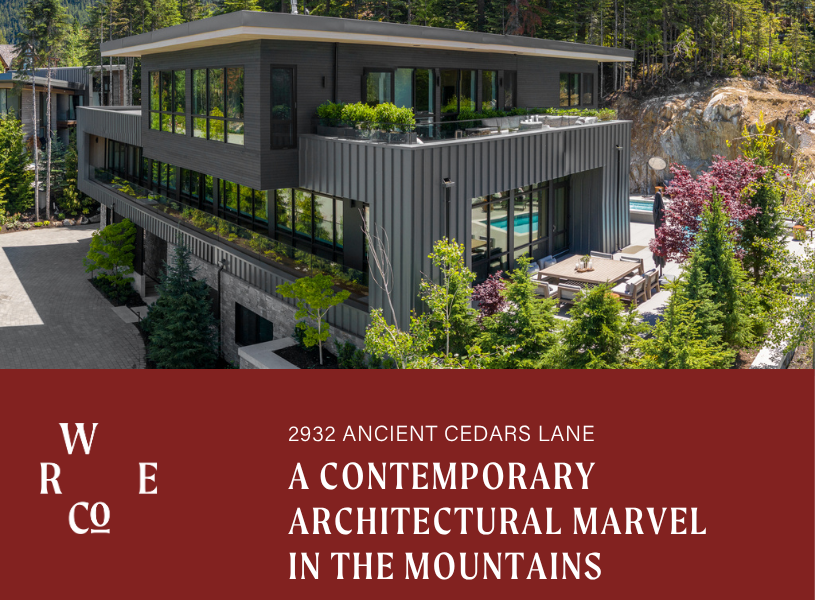The Inception of Whistler’s Condominiums

Today the term “condo” can be heard pretty much every day throughout most of Canada. When Whistler Mountain first opened in the 1960s, however, condominiums were almost unheard of. The first official condominium in Canada was Brentwood Village in Edmonton, Alberta in 1967.
After Whistler opened for skiing, the valley experienced a boom in construction. While many ski cabins were built as well, the condominium took hold as a vacation home, both to own and to rent. Garibaldi’s Whistler News (GWN), the newsletter put out by the lift company, even published an article by Ian Douglas in the fall of 1969 entitled “What is a Condominium?” for those unsure of what exactly was for sale. In it he mentions “some new condominiums” located “across from the base of the Gondola at Whistler” which all have their own separate entrances, real estate taxes and mortgages, unlike the Whistler Alpine Village co-operative, which does not technically operate as a condo. Douglas lists the benefits of owning a condo, such as the security of owning rather than renting and being able to do renovations (within limits).

The Alpine 68 condominiums, built in 1968, were designed by Gardiner, Thornton Davidson and were located near the gondola base.
The growing popularity of condominiums was not limited to the Whistler area. In the fall of 1973, Ski Trails, a monthly Vancouver publication sharing Canadian ski news, began a monthly column on buying condominiums as investments as so many of the developments were being built in British Columbia and Alberta.
From the coverage of GWN it would seem housing and real estate were as much a topic of conversation in the 1970s as they are today. Almost every issue contains news of a planned or completed development as well as real estate listings and updates on the progress of Alpine Meadows, Emerald Estates and Whistler Cay.
One condominium development that gets quite a few mentions is Tamarisk. Still a part of Whistler today, construction began on Tamarisk in 1973. The plans for the $15 million development, located about a mile away from the base of Whistler Mountain, included over 400 units, a “condo-lodge” containing a cocktail lounge and dining facilities, indoor and outdoor tennis courts and pools, and squash and handball courts, all to be built over two phases.

The Whistler Skiers’ Chapel was the first interdenominational chapel in Canada and was located right at the bottom of Whistler Mountain in today’s Creekside. The building was designed by architect Asbjorn Gathe, who also designed Tamarisk.
The first phase included 140 units, an outdoor tennis court and the heated outdoor swimming pool. According to Ski Trails in April 1973, almost all of the first phase units had been spoken for and a demonstration unit had been set up by the gondola in today’s Creekside. By the spring of 1974 a tennis pro, Australian Lex Vinson, had been hired and an advertisement in GWN (meant to attract buyers for phase two) announced, “All apartments feature massive cut stone fireplaces, wall-to-wall shag, private sauna (every apartment has one) and a furniture selection that’s an interior decorator’s dream. There’s more but you’ll have to see it to believe it.” It being the 1970s, wall-to-wall shag carpeting was a selling point rather than a deterrent, as was the sunken living room. Saunas were also popular throughout the Whistler area at the time, though today many of the saunas of Tamarisk have been converted into storage.

Alpine Village was built in a “west coast contemporary style” in the mid 1960s. Though they may look like condominium units, at the time they were sold as part of a cooperative, a different form of ownership.
The units were designed by Vancouver architect Asbjorn Gathe, the same architect who had designed the twelve units of Edelweiss Village near today’s Creekside gondola in 1968 and the Whistler Skiers’ Chapel right at the base of Whistler Mountain in 1966.
The first phase was completed by 1975 and continues to house residents and visitors today, as was the first outdoor tennis court and heated outdoor swimming pool. The plans for Tamarisk, however, were never fully realized, similar to other cases in Whistler such as Adventures West by Alta Lake and White Gold Estates.
Written by: Whistler Museum
Photo Credits: Whistler Mountain Ski Corporation Collection


